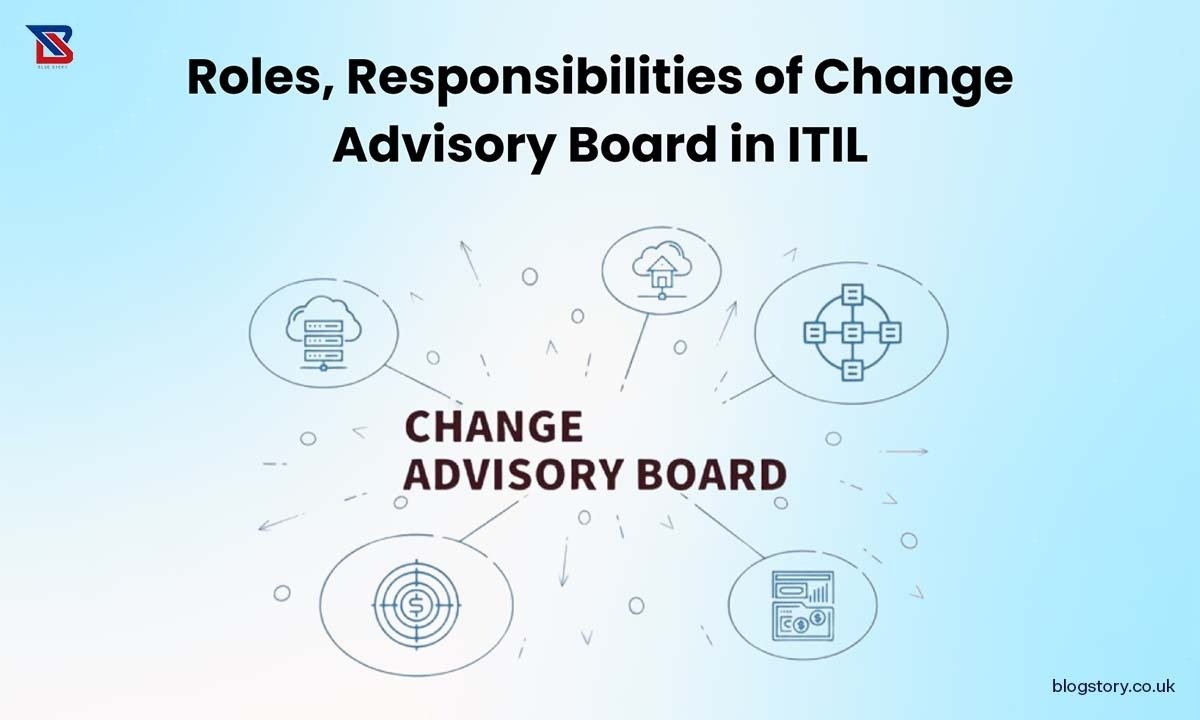
Roles, Responsibilities of Change Advisory Board in ITIL
The IT Infrastructure Library (ITIL) is a guiding light for best practices in IT service management, pointing enterprises toward productive and successful procedures. Professionals who want to learn more about this framework frequently enrol in ITIL Courses. The Change Advisory Board (CAB) is an essential component of ITIL Change Management, as it holds substantial authority over the direction of technical advancement.
In this blog, we will go through the functions and duties of the Change Advisory Board inside the ITIL framework.
The Essence of ITIL Change Management
Let’s pause to consider the larger backdrop of ITIL change management before going into the Change Advisory Board’s responsibilities.
In essence, it’s a discipline created to guarantee that standardized techniques and protocols are applied for effective and timely management of any modifications to IT infrastructure control.
Every modification, from software updates to configuration adjustments, goes through a meticulous procedure overseen by ITIL.
ITIL Courses As Catalysts of Change
Investing in ITIL courses becomes essential when firms adopt the concepts of ITIL to promote a competency culture.
These courses provide the cornerstone upon which people build their knowledge of ITIL change management.
By enrolling in ITIL courses, professionals can acquire the information and abilities necessary to effectively contribute to the Change Advisory Board’s overarching goals.
Roles of The Change Advisory Board
Strategic Decision-Making
The Change Advisory Board is essential to making strategic decisions on suggested improvements.
This entails determining how proposed changes would affect the current state of the IT landscape, identifying the risks involved, and coordinating changes with the organization’s overall business objectives.
By contributing their knowledge, CAB members ensure that choices are well-informed and consistent with the organization’s overarching plan.
Risk Assessment and Mitigation
One of the primary responsibilities of the Change Advisory Board is risk mitigation related to changes.
The CAB seeks to pinpoint possible hazards through comprehensive risk assessments and devise efficient mitigation plans.
This guarantees that modifications are executed with the least possible interference to continuing activities, highlighting the significance of the CAB as a defender of organizational stability.
Resource Allocation and Planning
The allocation of resources and careful planning are essential for the successful implementation of changes.
The task of carefully examining change ideas to ascertain the necessary human and technological resources falls to the CAB.
By doing this, the Change Advisory Board helps ensure that changes are implemented smoothly without putting undue strain on already limited resources.
Change Impact Analysis
To ascertain how suggested modifications might influence different facets of the IT environment, the Change Advisory Board performs extensive change impact evaluations.
This entails evaluating dependencies, possible disruptions, and the knock-on consequences on linked systems.
The CAB ensures the company is ready for the effects of changes introduced by carrying out a thorough change impact analysis.
Responsibilities of The Change Advisory Board
Change Prioritisation and Categorisation
The CAB acknowledges the fundamental reality that not all changes are created equal. Setting priorities and classifying changes according to importance and urgency is essential.
This guarantees that necessary adjustments get the attention they require and are in line with the company’s strategic goals and operational requirements.
Communication and Stakeholder Management
The key to implementing change successfully is effective communication. The CAB facilitates transparent communication channels, guaranteeing that stakeholders are informed at every stage of the change process.
The Change Advisory Board facilitates the seamless integration of changes by fostering a collaborative environment, managing expectations, and addressing concerns.
Continuous Improvement and Feedback Loop
Both the Change Advisory Board’s function and the ITIL framework are dynamic. The CAB’s duties are deeply rooted in continuous improvement, which propels the development of change management procedures.
By creating a feedback loop, the CAB can improve its strategy, draw lessons from the past, and adjust to the constantly changing world of IT services.
Post-Implementation Evaluation
The Change Advisory Board is in charge of reviewing changes after they are implemented. This entails determining if the projected advantages were attained, examining any unforeseen problems that might have occurred, and documenting the lessons gained for potential future advancements.
A critical component of the CAB’s duties is post-implementation evaluation, which guarantees a comprehensive comprehension of the effects of modifications.
ITIL Change Management and Change Advisory Board
The growing recognition of the Change Advisory Board’s crucial role by businesses highlights the growing alignment between ITIL change management and the overarching business goals.
The real benefit of ITIL courses lies in this mutually beneficial connection since they give professionals the skills they need to handle the complex web of IT service management.
In Conclusion
Within the ITIL framework, the Change Advisory Board serves as more than simply a regulatory body; it is a force that propels enterprises through the uncharted territory of technological transition.
Considering the tasks mentioned above and responsibilities, it’s clear that the Change Advisory Board is essential in guiding firms toward increased productivity and creativity.
Thus, whether you are thinking about taking ITIL courses to improve your abilities or being actively involved in the Change Advisory Board, keep in mind that in IT service management, flexibility and strategic decision-making are the keys to maximizing the potential of ITIL change management.
You May Like Also:












